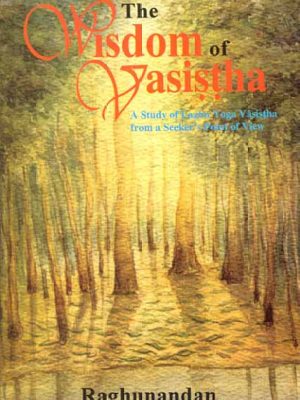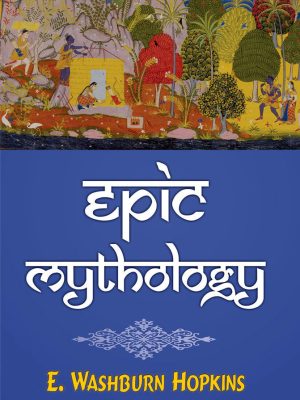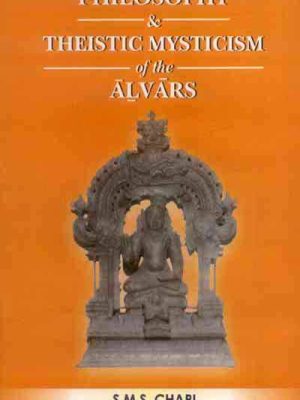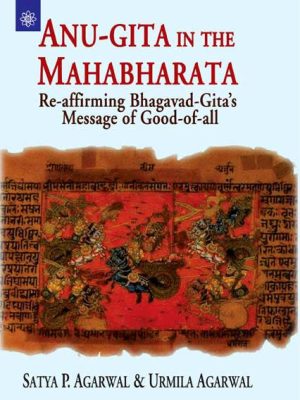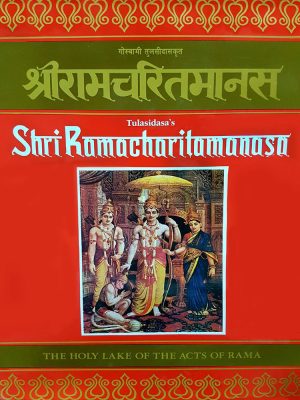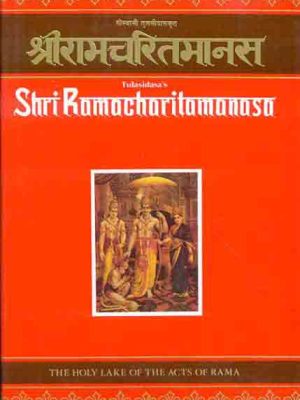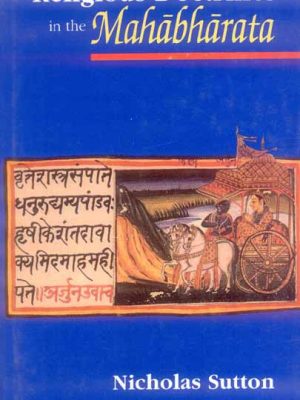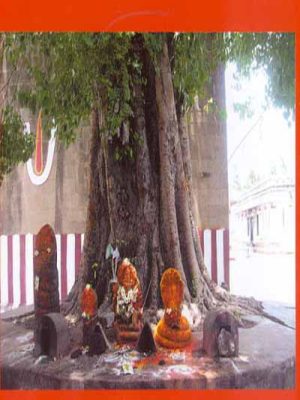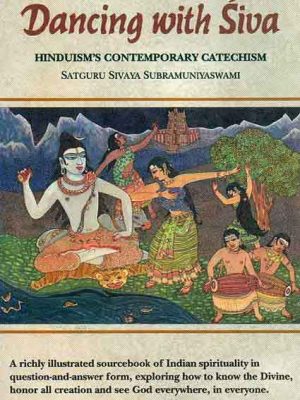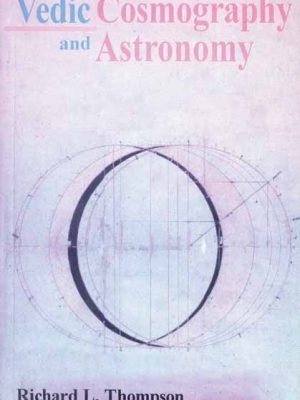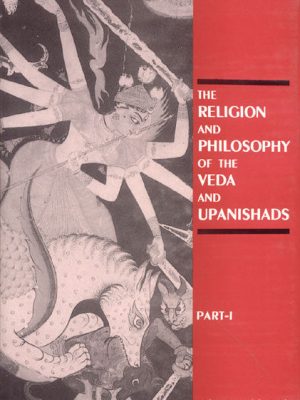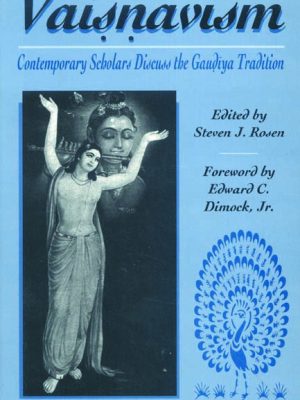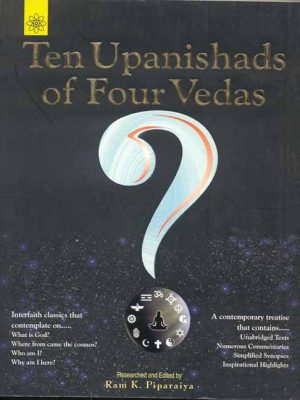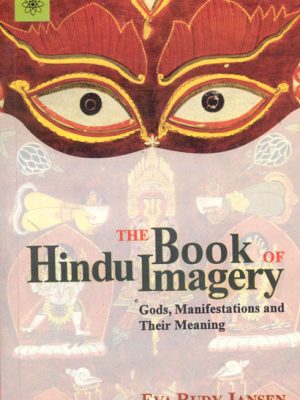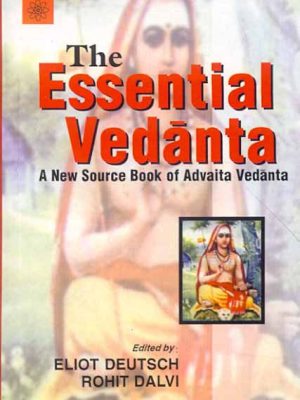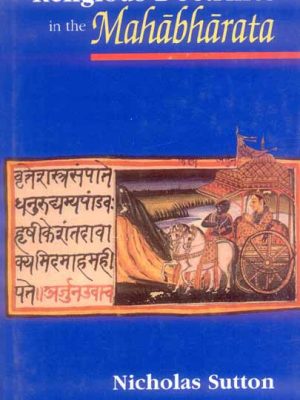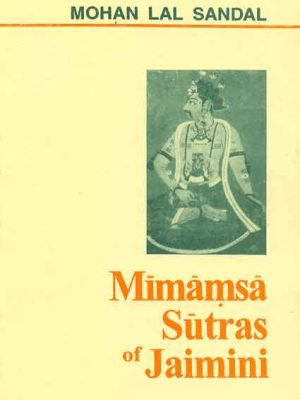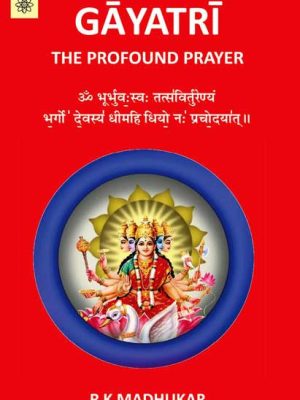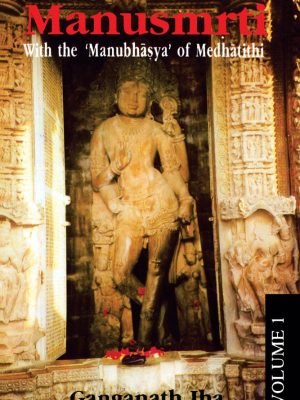-
The Wisdom of Vasistha: A Study on Laghu Yoga Vasistha from a Seeker’s point of view
The Wisdom of Vasistha: A Study on Laghu Yoga Vasistha from a Seeker’s point of view
Yogavasistha or Yogavasistha Maharamayana has been a guide book to earnest Sadhakas, all over the country. The popularity of this book appears to be due to the fact, that it is a happy combination of terse Upanisadic thought clothed in the story form. The Wisdom of Vasistha: A Study on Laghu Yoga Vasistha from a Seeker’s point of view A scripture becomes relevant, when it gives the truths of the Upanisads, using a common man’s language with illustrative stories, helps a beginner as well as an advanced seeker. It is believed by some that Sage Valmiki wrote the Ramayana for the purification of mind and to create a mood of seeking in the society. It is well known, that the story of Sri Rama, gives an exemplary ethical and moral behaviour in an individual, and a glimpse into the ideal culture, through the description of Ayodhya. For only on a strong ethical and moral foundation can one hope to build the super-structure of spirituality. Attempt has been made to cover all the stories in six Prakaranas. This book is a study by a seeker, and an attempt to present the philosophy, and practical hints contained in the book, to fellow seekers who are not very familiar with Sanskrit. It is essentially meant for inspiring the seekers to take up the study of the original text, which is a mine of practical wisdom. The essays contained herein, are glimpses into the meditations on the golden verses and their connection and relevance in our day-to-day life. Consequently, the interpretation and the perspective is not really meant for scholastic pursuits.
Author
Raghunandan
₹3,000.00 -
Epic Mythology
Epic Mythology
The study of the Indian epics the Ramayana and the Mahabharata is given a fresh perspective with the publication of this collection. In it, for the very first time, mythology is separated from the overarching themes that run throughout both of the epic books. Within a few hundred years of the start of the Christian era, the people who lived in Northern India along the Ganges believed the mythology that is described in India’s two epics to be representative of their general worldview. The time period covered by the Mahabharata is from 300 B.C. to 400 A.D. In its entirety, the Mahabharata was written much later than the Ramayana, which is both more technically accomplished in its metre and the product of a single author. The more brutal epic style of the Mahabharata depicts a life that is more civilised than the one seen in the Ramayana. It is also the product of the combined efforts of many people over a long period of time.
Epic mythology is, however, is fairly consistent. There is no great discrepancy between the character of any one god in the Mahabharata and that of the same god in Ramayana. Nor is the character of gods very different in different parts of the Mahabharata, save for the sectarian tendency to invert the positions of the three highest gods in favour of the sect.
Author
Edward Washburn Hopkins
₹595.00Epic Mythology
₹595.00 -
Philosophy and Theistic Mysticism of the Alvars
Philosophy and Theistic Mysticism of the Alvars
Alvars, the twelve Vaisnava saints of South India, who lived between the fifth and eighth centuries A.D., constitute a key era of Vaisnava philosophy and religion that laid the groundwork for the development of Visistadvaita Vedanta in the hands of Ramanuja and his renowned successors. Philosophy and Theistic Mysticism of the Alvars Four thousand devotional Tamil songs, collectively known as Nalayira-Divyaprabandham, full of philosophical and theological lessons, have been left to future generations as a rich legacy. A systematic presentation of these principles is presented in this work, without the development of theological and sectarian perspectives that were formed by commentators after Ramanuja. A thorough examination of the Alvars’ philosophy and mysticism based on the original source material is presented, with textual authority fully cited, under six broad headings: doctrine of ultimate reality (paratattva); god (Isvara); individual self (Jivatman); practise (Saddhana); and the supreme goal (parama-purusartha); and theistic mysticism. For the first time in English, a full and authoritative account of the Alvars’ philosophy and mysticism can be found in this work. For anyone interested in learning more about Vaisnavism and the Alvar sect, this book is a must-have for comparative religion majors.
Author
S.M. Srinivasa Chari
₹695.00 -
Anu-Gita in the Mahabharata: Re-affirming Bhagavad-Gita’s Message of Good-of-all
Anu-Gita in the Mahabharata: Re-affirming Bhagavad-Gita’s Message of Good-of-all
The purpose of writing this book is to make available to English-knowing readers, an easyto-read version of Anu-Gita. Although Anu-Gita is an important part of the Maha-bharata, it has so far not been presented in a simple form to common people, with the result that most people do not even
know that such a book exists. The prefix ‘Anu’ denotes ‘after’, so Anu-Gita literally means ‘Gita occuring after’. In the Mahabharata, Bhagavat-Gita occurs in Parva No. 14. (In all, there are 18 Parvas in the Mahabharata).
It is well known that the Gita was taught by Lord Krishna to Arjuna on the battle field of
Kuruksetra. So it was a time of crisis at the time of Anu-Gita. In fact, the Mahabharata war was over and peace was established in the Kingdom, under the rule of Yudhisthira (whom every one including Arjuna supported).
But the format of Anu-Gita is different from that of the Gita. In the Gita, there was dialogue between Krishna and Arjuna. On the other hand, in Anu-Gita, Krishna makes use of three ancient
dialogues. Because of this, Anu-Gita has a lot of repetitions, which have made it longer than the
Gita. For example, Anu-Gita has thirty-six chapters (compared to eighteen chapters in the Gita), and 1040 shlokas (compared to 700 shlokas in the Gita). In order to present Anu-Gita in an easy-to-read version, the authors have omitted the repetitions, and have selected 400 shlokas. But they have retained all the main teachings of Anu-Gita.
Most people (even in India) have not heard the name of Anu-Gita. This is so because, although Anu-Gita is an important part of the Mahabharata, no scholarly study of it, in a simple language, has so far been published. This gap will be filled by this pioneering book, which explains under what circumstances was the Gita taught by Lord Krishna to Arjuna, for the second time. This book is divided into two parts. Part I presents the Sanskrit-shlokas of Anu-Gita, along with their translation in simple English. Part II explains the main points of similarity, as well as dissimilarity, between Gita and Anu-Gita.
Author
Satya P. Agarwal
₹250.00 -
Shri Ramacharitamanasa: The Holy Lake Of The Acts Of Rama
Shri Ramacharitamanasa: The Holy Lake Of The Acts Of Rama
The SHRI RAMACHARITAMANASA by Tulasidasa is the single most popular book among Hindus. This book has a huge appeal to the affluent and the poor, the learned and the uneducated, the elderly and the young, as well as the scholar and the ordinary man. It has been around for more than four centuries.
Its popularity is neither exclusive to India, nor is it just read by Hindus, neither of which is true. Because it reaffirms man’s trust in the robustness of moral order that sustains the world, the message of the RAMACHARITAMANASA is more pertinent than ever in today’s world. Dark and wicked powers may and will sometimes pose a danger to disturb that order, but eventually, divine intervention will chasten and subjugate those forces and bring them under control.
This one-of-a-kind version of the RAMACHARITAMANASA has been developed with a verse-by-verse Hindi and English translation, in addition to Tulasidasa’s original text, bearing in mind the ever-increasing interest that people have shown in epic literature. The fundamental richness of the original has been preserved in the translation that was produced by an expert scholar. It has been constructed with the intention of being of assistance to Indian brothers and sisters who are now residing outside of India and for whom the dialect used in Tulasidasa’s original may be rather difficult to understand. The enormous Indian diaspora living in other countries has, for a very long time, voiced their desire for a standard and genuine copy of the RAMACHARITAMANASA. The current version was developed to fulfil their request by using the most cutting-edge printing and processing methods available in order to produce a product that conforms to international standards.
This version is distinguished in particular by the incorporation of Lavakushakanda, Shri Hanumanchalisa, and Shri Ramashalaka Prashnavali. The manner in which it is to be recited is detailed in a separate appendix. The significant portion that includes Indian, European, and American scholars’ critiques of Tulasidasa’s RAMACHARITAMANASA is another facet that contributes to the book’s one-of-a-kind character. The last section includes a dictionary that defines significant proper nouns as well as epithets.
Dr. R.C. Prasad translated SHRI RAMACHARITAMANASA into simple and lucid English and Hindi. He was a University Professor of English in Patna University where he taught for about three decades. He was an eminent author, translator and editor. He had a good number of books to his credit.
₹1,500.00 -
Shri Ramacharitamanasa of Tulasidasa: The Holy Lake of the Acts of Rama
Shri Ramacharitamanasa of Tulasidasa: The Holy Lake of the Acts of Rama
This one-of-a-kind version of the Ramacharitamanasa, which includes Tulsidasa’s original text in addition to verse-by-verse translations in Hindi and English, was created with the goal of satisfying the ever-increasing interest that people have in epic literature. The translation that was done by a skilled academic does the original work justice in terms of its inherent depth and complexity. The Indian brothers who are now residing outside of India, for whom the regional accent of Tulsidasa’s original may be somewhat difficult to understand, have been the focus of particular attention in the process of making this resource helpful. A regular and genuine copy of the Ramacharitamanasa has been in high demand among the enormous Indian population that has relocated outside of India for a significant amount of time. The current edition, which has been produced to fulfil their need by using the most up-to-date printing and processing processes, has been created to conform to the worldwide standard for works of literature.
The addition of Lavakushakanda, Shri Hanumanchalisa, and Shri Ramashalaka Prashnavali is a noteworthy aspect of this edition. The manner in which it is to be recited is detailed in an appendix that is presented on its own. The inclusion of an essential portion that contains Indian, European, and American scholar’s critiques of Tulsidasa’s Ramacharitamanasa is another factor that contributes to its one-of-a-kind quality. At the conclusion, you will get a dictionary that defines significant proper nouns as well as epithets.
Author
DR. R. C. PRASAD
₹495.00 -
Religious Doctrines in the Mahabharata
Religious Doctrines in the Mahabharata
This is the longest epic poem ever written, and it is widely considered to be one of the best epic poems ever written in any language. With the intention of serving as a treatise on life in general, it covers topics such as religion and ethics, politics and government philosophy, and the search for redemption.
Reprint of a foundational text on the Mahabharata that examines the book’s most important ideas and topics. a new perspective on the ancient Hindu and Indian epicReview(s)
“…it explores a certain discourse rather than expounding a single dogmas” … extremely useful to have materials from the whole epic so carefully assembled and compared.” – Journal of Royal Asiatic Society
“This is an eminently readable book.
Author
Nicholas Sutton
₹995.00 -
Gods Beyond Temples
Gods Beyond Temples
The holy is more of an experience than an idea in the Indian tradition, and it extends well beyond the confined spaces of an organised temple or even a shrine. The adherents of this religion, much like the gods of this tradition, are humble and unassuming, yet at the same time dignified and certain of themselves. Whether it be a tree that is revered or a naturally occurring stone that is revered, a river that is the embodiment of divinity itself, an ancestor that is worshipped, a fabric that is simply draped, a road side shrine on a busy street or a votive terracotta horse that was lovingly made and offered, a narrative scroll that holds its audience spell-bound; here is religion at work that is as spontaneous as it is intemperate. The rites and practises performed in honour of these deities are neither written nor canonised; nonetheless, whatever they may lack in grandeur, erudition, and formality, they more than make up for in the faith and passion that they inspire in those who participate in them. These sacred manifestations and expressions of the ordinary people have a tendency to be sidelined or dismissed by academics as well as the world at large, as minor or lesser gods worthy of curiosity but not of serious study. However, it is important to keep in mind that they have a beauty and presence of their own in the pluralistic Indian tradition.
About
HARSHA V. DEHEJIA
About the Author(s)
HARSHA V. DEHEJIA has a double doctorate, one in Medicine and the other in Ancient Indian Culture both from Bombay University, in India. His first two books, The Advaita of Art and Parvatidarpana have been acclaimed.
₹2,500.00Gods Beyond Temples
₹2,500.00 -
Dancing with Siva: Hinduism’s Contemporary Catechism
Dancing with Siva: Hinduism’s Contemporary Catechism
A question-and-answer formatted reference on Indian spirituality that is vividly illustrated throughout. Topics covered include how to know the Divine, respect all creation, and recognise God everywhere and in everyone.
The Complete Master Course Series This book contains some information that has never been published before, and all of it is pertinent to your own awakening on the road to union with God. You will learn the deepest truths and insights of Indian spirituality inside this book. Dancing with Shiva is the first book of an unique trilogy that is collectively referred to as The Master Course. It represents the culmination of fifty years of yogic realisations and the sharing of the Hindu mystical teachings with aspirants. The trilogy is a comprehensive overview of astanga yoga, which is also known as raja yoga. Astanga yoga is comprised of eight distinct stages, each of which is reliant upon the step that came before it. These eight processes are known as yama (restraint), niyama (surveillance), asana (posture), pranayama (breath control), pratyabhara (sense withdrawal), dharana (concentration), dhyana (meditation), and samadhi. yama means restriction, niyama means observance, and asana means posture (contemplation).
The trilogy elucidates, in clear and concise words, why one must start at the beginning, with a solid foundation consisting of philosophical coherence and moral excellence, and then progress from there. The book “Dancing with Siva” explains the philosophical and Vedic-Agamic ideas, attitudes, and expectations that are central to the Saivite school of Hinduism.
The second book in the trilogy, titled Living with Siva, delves into the Saivite way of life, as well as its culture, family dynamics, the process of developing one’s personality, and the triumph over negative patterns of behaviour. It emphasises on yama, niyama and, in a lesser manner, asana and pranayama (hatha yoga).
Author
₹1,295.00 -
Vedic Cosmography and Astronomy
Vedic Cosmography and Astronomy
The secrets of the Fifth Canto of the Srimad-Bhagavatam have long confused scholars of Vedic cosmography and astronomy. Confronted with a description of the universe that seems much at variance with the information provided by our senses and standard astronomical calculations, foreign observers—and even Indian commentators—from the Middle Ages up to the present have concluded that the Bhagavatam’s account, elaborated in other Puranas, must be mythological. On the other hand, the same folks have been immensely impressed by Vedic astronomical treatises, the Jyotisa Sastras, which offer extremely precise measurements of the solar system. In Vedic Cosmography and Astronomy, Dr. Thompson shows that the Fifth Canto’s cosmography and the accounts of the solar system found in the Jyotisa Sastras are not contradictory, but that they in fact represent distinct yet mutually consistent ways of comprehending a universe with important features beyond the range of ordinary sense perception.
Author
Richard L. Thompson
₹595.00Vedic Cosmography and Astronomy
₹595.00 -
Religion and Philosophy of the Veda and Upanishads (2 Vols.)
Religion and Philosophy of the Veda and Upanishads (2 Vols.)
This publication gives an account that is both thorough and brief of the whole of the religion and philosophy that existed in India throughout the Vedic era. Any anyone who is serious about their study of religion and philosophy will find this book to be a very helpful and comprehensive source of information. This massive effort has been undertaken with the intention of reestablishing the Vedic religion to its rightful position in the field of theological research.
About the Author(s)
Arthur Berriedale Keith
₹1,795.00 -
Vaisnavism: Contemporary Scholars Discuss the Gaudiya Tradition
Vaisnavism: Contemporary Scholars Discuss the Gaudiya Tradition
The topic of discussion in Vaisnavism: Contemporary Scholars Discuss the Gaudiya Tradition is an old religious tradition as seen through the lens of current study. Steven J. Rosen and twenty-five eminent scholars examine the different facets of Gaudiya via a series of stimulating debates in this book. VAisnavism—its
literature, historical progression, theological analysis, and religious practise. As the researchers share the knowledge they’ve acquired over the course of their years of study, thoughtful and, indeed, fascinating viewpoints emerge. This ancient East Indian tradition is brought to light through exploring topics such as the nature of the Absolute, devotional poetry, holy space, mystical states, and sound theology. These topics bring to light the rich beauty and profoundness of this tradition.
₹495.00 -
Ten Upanishads Of Four Vedas
Ten Upanishads Of Four Vedas
Ten Upanishads Of Four Vedas,Ram K.Piparaiya: A modern treatise that includes whole texts, extensive commentaries, condensed summaries, and pivotal points of inspiration. This book is a valuable compilation of the original Upanishadic writings as well as commentaries on those works. Classic works from a variety of faiths that provoke thought on. Who is God, exactly? Where did everything in the universe come from? Just who am I? Why am I in this place?
The Upanishads provide a chronicle of the human mind’s early voyages into the realm of the unknown via contemplation.
At the very least, a few centuries separated many of the nameless searchers from famous teachers and prophets such as Lao-Tzu, Confucius, Socrates, Zoroaster, Buddha, Mahavira, Abraham, and Jesus. Among the anonymous seekers were those who came before them.
In the Upanishads, the link between man, God, and the universe is illustrated via a variety of intriguing tales and metaphors.
Aphorisms are short sayings that pack a lot of wisdom into a little amount of space.
The sheer sight of Upanishads texts on a bookshelf is enough to evoke contemplation of wisdom after just a few moments of reading them.
About the Author(s)
Shri Ram Piparaiya
₹2,000.00Ten Upanishads Of Four Vedas
₹2,000.00 -
The Book of Hindu Imagery: Gods and Their Symbols
The Book of Hindu Imagery: Gods and Their Symbols
Hinduism is more than a religion; it is a way of ife that has developed over approximately 5 milennia. Its rich and multicultured history, which has no equivalent among the great religions of the world, has made the structure of its mythical and philosophical principles into a highly
differentiated maze, of which total knowledge is a practical impossibility.
This volume cannot offer a complete survey of the meaning of Hinduism, but Eva Rudy Jansen does provide an extensive compilation of important deities and their divine manifestations, so that modern students can understand the significance of the Hindu pantheon.
To facilitate easy recognition, a survey of ritual gestures, postures, attires and attributes as well as an index are included. Over 100 illustrations and several photographs make this book an important
reference, both to the student of Hindu art and the interested amateur.
About the Author(s)
EVA RUDY JANSEN
₹295.00 -
The Essential Vedanta: A New Source book of Advaita Vedanta
The Essential Vedanta: A New Source book of Advaita Vedanta
The Essential Vedanta is a comprehensive introduction to the tradition of Advaita Vedanta based upon primary sources and makes possible a study of it in its classical form. Translations from all major sanskrit writings are included as well as selections from all of the most important representatives of this central philosophy of India.
About the Author(s)
Rohit Dalvi
₹450.00 -
Religious Doctrines in the Mahabharata
Religious Doctrines in the Mahabharata
In this new edition of a classic text on the Mahabharata, the primary concepts and themes are discussed and evaluated. unique take on one of India’s best-known epics. A lot of positive feedback.
Author
Nicholas Sutton
₹795.00 -
Mimamsa Sutras of Jaimini
Mimamsa Sutras of Jaimini
One of the most important ancient Hindi philosophical writings is Jaimin’s Purva Mimamsa Sutras. Indian philosophy is based on Mimamsa, the first of the six orthodox (Dars’anas) schools. The complete work is divided into twelve adhydyces (chapters) which are further divided into sixtypadas (sections). Besides presenting conceptual explanations for the performance of Vedic rituals, the literature explains the meaning and significance of these practises in order to help readers achieve liberation, or Moksha.
According to Jaimini’s Mimamsa Sutra, all of reality is made up of material activity and the effects it produces. In the Karma-mimamsa school of thought, he and later adherents believe that there is no end to the cycle of rebirth, and that there is no freedom. Higher rebirth in the Deva realm is all that can be hoped for by Mimathsas in the endless circle of karma. It is because of this, they say, that the Vedas exist in the first place, that the primary task of a mature soul is to understand and carry out the sacrifice directives contained in the Vedas.
Author
PANDIT GANGANATHA JHA
₹495.00Mimamsa Sutras of Jaimini
₹495.00 -
Gayatri: The profound prayer
Gayatri: The profound prayer
Gayatri is a profound prayer. It is an authentic prayer that elevates, exhilarates and enlightens. According to Hindu scriptures, a prayer in its real sense is not just chanting of a few verses. It is a comprehensive exercise that involves jnana (knowledge), dhyana (meditation) and anubhava (experience). Gayatri Mahamantra is a true prayer that not only reaches out but also reaches in.
Gayatri is chanted as a Mahamantra, worshipped as the Mother Goddess and expressed as a Meter. It is not a prayer for worldly and material benefits. Gayatri is a prayer for the highest enlightenment. It is a prayer that leads to a sublime experience, a prayer that opens up our mind and vision, body and intellect to a world beyond the worldly attachments. It is a prayer that leads to the Ultimate Truth and Supreme Bliss that every enlightened human being seeks.
Gayatri, like the Vedas, is meant for the entire mankind, irrespective of gender, caste, creed, religion or nationality. It is a profound prayer that can touch and transform every human being.
This book is a good read for everyone who believes in the efficacy of prayer and meditation. It is also a good read for everyone who wishes to gain an insight into the breadth and depth of ancient Indian wisdom – the Sanathana Dharma. This informative book is meant for every generation, both young and old.
Review(s)
Gayatri-The Profound Prayer is the authorÍs first spiritual book. Writing it has been a divine spiritual experience for him. -SWAMI BALAKRISHNANANDA SARASWATHI Founder of Gayatri Tapobhoomi, Tadas, Hubli, Karnataka
Author
Madhukar
₹495.00Gayatri: The profound prayer
₹495.00 -
Moral Dilemmas in the Mahabharata
Moral Dilemmas in the Mahabharata
Here the collected papers explore the whole question of the relation between the mythopoetic and the moral in the context of the Mahabharata. Here we have a story of extreme complexity, characters that are unforgettable, and a cosmic context in which gods and men alike grapple with destiny. The obligations of kinship and friendship jostle with each other. The women characters, as in everyday life, seem to bear a very heavy load of the burden of life and to stand in a key position in almost every conflict. We are presented with predicaments at every turn. At times these predicaments seem to be aggravated by social structure. At other times they are cushioned by it. Philosophical tangles tied up with karma and dharma are interwoven with the mythopoetic material. Perhaps philosophical issues are pinpointed rather more than they are in Greek epic literature.
The essays in this book treat the Mahabharata from an unusual angle, fastening on the moral dilemmas it presents. How universal are the dilemmas faced by the characters in the story, and are the dilemmas in fact resolved? In dealing with these questions, the discussions range over the meaning of the purusarthas, the institutions of marriage and the family, the concept of action in the Gita and the special predicaments faced by Draupadi, Arjuna and others. These studies invite the scholar to reflect afresh on the text and encourage the general reader to find in epic literature much that is relevant to life today.
₹395.00 -
Manusmrti, 10 Vols.: With the ‘Manubhasya’ of Medhatithi
Manusmrti, 10 Vols.: With the ‘Manubhasya’ of Medhatithi
Ganganatha Jha’s Mualti-volume Manusmrti, originally published by the University of Calcutta between 1920 and 1939 is as indicated by its subtitle “The Laws of Manu with the Bhasya of Medhatithi”, mainly an edition and translation of the Mula text together with the explanation of the most celebrated commentator. Medhatithi’s Manubhasya has been characterized by one of the leading scholars on Dharmasastra, J. Duncan M. Derrett, as a large repertory of opinion on the meaning of the “Smrti and on some fundamental questions of Dharma and Law.”
The present work is divided into three sets, i.e. Sanskrit Text (Mula), English Translation and Notes. These comprise of two, five and three volumes-in all the ten volumes. The first two volumes are devoted to (Mula) Sanskrit Text. The first consists of first six Adhyayas and the subsequent carries next six Adhyayas from Vii to XII and a detailed Index for both volumes. The next five volumes (Vol.3 to 7) belong to English Translation. The Vol.3 carries Adhyayas I and II, Vol.4 contains Adhyayas III and IV, Vol.5 has Adhyayas V to VII, Vol 6 has Adhyaya 8, and Vol.7 has last four Adhyayas (IX to XII). All volumes contain a detailed Index. The last three volumes (8 to 10 are devoted to detailed Notes conducive to understanding the subject of the Smrti even to an interested average reader. These belong to textual, explanation and comparative respectively. These contain much useful informations
₹25,000.00
